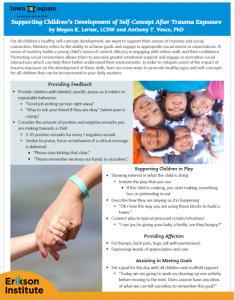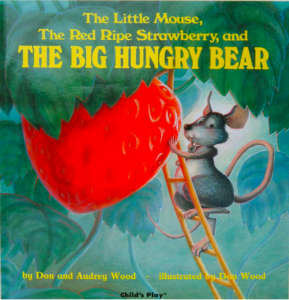What can a child learn from a fight? A lot, with the right opportunities.
A dispute with a peer can teach a child about how to voice their own needs, how to weigh the needs of another, and how to compromise and problem-solve with others.
In the Japanese practice of Mimamoru (literally, “watch and protect”), early childhood practitioners are trained to intervene minimally and later than many American early childhood educators would expect, while still closely observing children’s fights. The principle behind this is that while the adult’s role is to protect the children, children need the experience of navigating social complexity to build their social skills. A child who hits another and is then sent away from the activity learns that the adult nearby doesn’t want them to hit but does not learn how to get their needs met. When that same adult stop in, checks on the child who was hit, and helps both children verbalize their wants and needs, both children have the opportunity to understand each other and find a solution.
Perhaps the more difficult situation here is one where the attacks aren’t physical, but emotional. Relational aggression (e.g. “You’re not my friend!” or “You can’t come to my birthday party!”) can be more difficult to intervene in, and harder to spot. This also tends to peak in late preschool and early elementary years as children refine their definition of friendships and understand what it means to be a friend, as well as the power that comes from being included or excluding others.
In either act of aggression, how can the educator offer a learning opportunity instead of simply managing or shutting down the behavior? People are born with the desire to connect, and emotional resilience, as well as a guiding moral voice. What needs to be scaffolded are the skills to advocate for oneself and listen to and hypothesize about others’ perspectives.
First, look at the purpose of adult interventions: no one wants the children to be hurt, physically or emotionally. But in the same way that learning to walk comes with a few tumbles, learning to be a friend and participant in a community comes with its own missteps. If children cannot learn from each other and us when they’re small, they won’t have the experience to navigate social relationships as they become more complex.
This is the platform on which larger concepts of restorative justice are built; instead of punishing the person who harmed another, we work to ensure that the person who was hurt is comforted, and the person who did the hurting has the resources to avoid doing it again.
Questions for your reflection:
- What was your first reaction when you thought about waiting to intervene?
- What are your current intervention strategies when children are fighting?
- How could you integrate a “pause” before intervening?
- What else could you do to support children in learning conflict mediation?
Supporting Children’s Development of Self-Concept
This resource was developed with Megan K. Lerner, LCSW, and Anthony T. Vesco, PhD, as part of their series on trauma informed principles and practices in Family Child Care settings.
This nine-part course (approximately 3 hours and 45 minutes) from the National Child Traumatic Stress Network will teach participants about “early childhood social-emotional development; the impact of stress and trauma; reflect on the possible meanings of children’s behaviors; explore the influence of culture on families’ socialization goals; and become familiar with a number of strategies aimed to promote secure attachment and safe socialization practices.”
Providers will need to sign up for a free account to access this resource.
Young children are absorbing information from everything around them, but they haven’t yet developed a “filter” through which to assess that information, which is part of why it’s so important to discuss the media they are taking in with them directly.
I hope to introduce you to both specific books with excellent opportunities for conversation with young children, and also some jumping off points to carry into your discussions about books and other media as you consume it with the children in your care.
To start off, a classic: The Little Mouse, The Red Ripe Strawberry, and The Big Hungry Bear.
This is one of my favorite books to consciously introduce young children to the amount of information they can get from facial expressions and body language. Before reading it to the children, flip through and notice the huge variety of emotions that are readily apparent on the Little Mouse’s face. Pride, surprise, fear, regret, anxiety, confidence, and joy all stand out to me on different pages.
As you read, pause to notice out loud how the mouse appears to be feeling. Mimic the expression on your own face and see if the children do it as well. With older children, you can “wonder out loud” with statements like “I wonder what the mouse thinks the bear will do?” or “I wonder what he’s planning,” or invite discussion with prompts such as “I think he looks scared, here; look at his eyebrows. Do you see anything else that might tell me he’s scared?”
Using books to teach social-emotional competence gives children a low-stakes time to practice reading others’ emotions. When children haven’t had the opportunity to practice “reading” others’ faces, they have to learn on the fly, which can mean more conflict and more social struggles. For example, a three-year-old might not notice that the friend he’s chasing in a game of tag isn’t having fun anymore until that friend is in tears, rather than seeing his friend’s facial expression and other non-verbal cues and stopping the game.
Learning to read body language and facial expressions takes time and comes more easily to some children than others. When we take the time to consciously teach children about it, we can help build their empathic skills as they learn more about other people.

